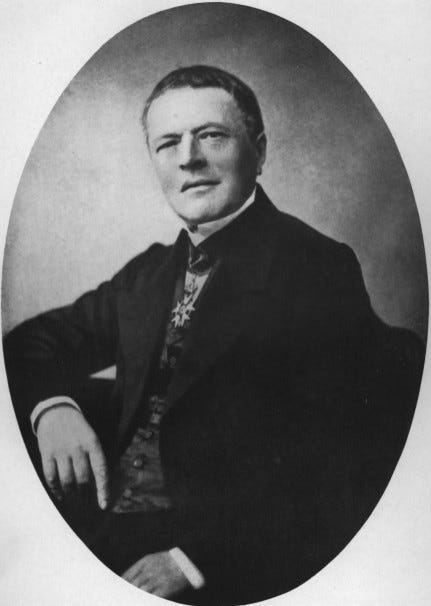Oligopolies in Transportation and Related Markets: Three Classic Oligopoly Models
Let the *games* begin!

Introduction
When one of your Ride On writers was collecting data for his PhD dissertation, he drove around Guelph, Ontario every two hours from 8:00AM — 10:00PM, every day for 103 days in late 2005. There were 28 gasoline retailers in the city at the time, and he collected prices from 27 of them during every tour around the city.1
It was truly a Hellish experience at times. In fact, one of his associates believed it to be worse than being in a Turkish prison, and that person also referred to it being like “living with the apes” Jane Goodall style! But it gave this student experiences he still uses to bore people today — like you all!
Anyway, prices in this market followed what is known as Edgeworth Cycles: after prices fall to a point where gasoline stations are no longer making profits — maybe even losing money on gasoline — then one station recognized as the leader will raise its price to just above the monopoly price. Everyone else will follow this lead, after which prices will fall little-by-little until profits are non-positive again. Then the cycle will be renewed when the leader raises its price above the monopoly price again.
It was during this time your Ride On writer was able to predict almost perfectly which stations would lead the cycle “restorations”, what day and time they would raise their prices, and who would lead the price war as prices fell again.
This is what he found specifically:
Prices would tend to fall until Monday or Tuesday morning when demand was at a weekly low — because people tend to buy gas right before the weekend begins — and when these prices were below the London, Ontario rack (wholesale) price.
Then all five Petro-Canada and Esso stations controlled by their head offices would raise their prices to 7.0 cents above that wholesale price, and then round the last digit of that price to be either “9” or “5”. For example, if the rack price was 99.7 cents per litre (cpl) that day, these five stations would set a price that was either 106.5 cpl or 106.9 cpl (the price usually ended in “9”).
These price increases would occur between 10:00AM and noon when customers tended to be not paying attention, so demand for gas was at a low point during the day.2
Then by noon when these same customers were potentially on their lunch breaks — and therefore paying closer attention to prices — these five stations would lower their prices back down to where they were at the beginning of the morning. They would then allegedly “wait” for other stations to follow their lead to the top.
By 4:00PM when the afternoon rush occurred and customers were again paying more attention to prices, most follower stations did follow their lead, after which the original five stations would raise their prices again by the end of the night.
Then for the next week or so, prices would fall bit-by-bit as the “maverick” in the city (Pioneer) led a price war to the bottom of the cycle.
He found by watching GasBuddy that the exact same patterns held in nearby Kitchener, Waterloo, and Cambridge.
Keep in mind this Ride On writer never talked to anyone in the industry while all this was happening. But it appeared the leader stations were sending a signal to the other stations that this is the price that needed to be set. They could send this signal rather easily because every other station was just a few kilometres away from one of them, so it would not be much trouble for the followers to keep an eye on at least one leader.
But these five leaders allegedly did not want to be seen by customers as the leaders, because that could harm brand loyalty, so they lowered their prices again before noon, with the corresponding implicit threat that if the other stations did not follow the lead, then they could just stay down there and continue to lose money — these Petro-Canada and Esso stations could afford losses more than their smaller competitors, given these brands make most of their money in upstream markets.
To be clear, this is not illegal, as long as none of them ever explicitly spoke about it with each other. It is just an understanding that arises with constant —but silent — strategic interaction. It is known to economists as tacit collusion because these competitors know each other well enough to know how to recognize signals.
After all, your Ride On writer took only one month to figure out the patterns, and he talked to no one in the industry about what he was doing. If a stupid nobody like him could figure out what these station operators were doing without talking to them, then so could anyone who made their actual livings in the market.
So this is an example of rather extreme price competition, and it leads us to our subject for today’s issue of Ride On: three classic oligopoly models. In the process, we want to answer the following questions:
What factors determine the oligopoly equilibrium?
How does the equilibrium vary with the number of firms, the types of actions firms may take, and the order in which firms act?
We will also explain how we might determine whether businesses are price-competitors or quantity-competitors, and when competitors within the same industry might follow different strategies from one another.
But before we begin with this issue of our newsletter, if you enjoy what we write and find it valuable, please consider a paid subscription. It will help us to devote more resources into what we write so it will get even better!
Thank you for coming along on this ride with us!




